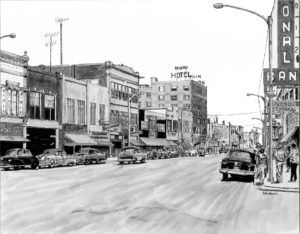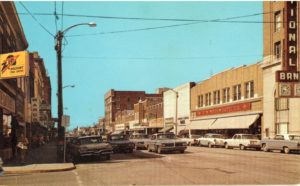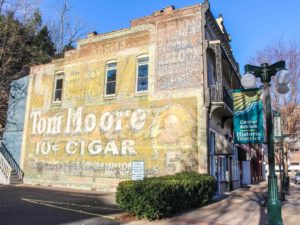
The communities that we live in have been evolving since time immemorial. No facet of American culture has undergone more transformations than the downtown business district.
Every town with more than a couple hundred residents has one. And the odds are that it has seen its share of ups and downs over the years. And I’m not just talking Boomer years, either.
In the area where I grew up, there was a boom in the formation and growth of communities about the turn of the 20th century. In Oklahoma, many of these were given the names of Indian tribes that had been forcefully relocated there during the Trail of Tears era. In Arkansas, where I currently reside, communities are often named after railroad executives, who were often responsible for their formation at key points along the routes.
Stroll along the downtown sidewalks of these communities, and you will likely see durable old buildings dating from this era, from the late 1800’s to the early 1900’s.

Those buildings have probably seen much in the way of both glory and ignominy.
When we grew up in the 50’s and 60’s, downtowns were on the rebound. They started off strong, but when the Great Depression hit, many of the businesses that had originally inhabited the buildings dropped out of sight. Many downtown structures were unoccupied while the country ‘s economy convulsed.
However, the economy eventually woke up and began roaring during WWII, and once again downtown buildings became inhabited by thriving businesses. After the war, prosperity was in the air, and every downtown was filled with shoppes run by returned vets who were doing a brisk business.
Many a downtown of this era sported a business or two selling the Next Great Invention, television. A big store window might feature several powered-up models, and it was a popular place for the less fortunate who could not yet afford one to enjoy the hypnotic effects of the one-eyed monster.
Then there were the dime stores. We all fondly remember the downtowns of our youth containing at least one Woolworths, or TG&Y, or Kress, or Ben Franklin.
There would also be banks, a hardware store, a shoe store, and a single-screen movie theater.

Thus ended the sweet 60’s. The next two decades would lead us to believe that the downtown business district was dead.
Now Main Street’s whitewashed windows, and vacant stores
Seems like nobody ever wants to go down there no more
In 1984’s My Hometown, Bruce Springsteen summed up downtown’s plight in that era. The 70’s were brutal on the economy. Things were turning around in the 80’s, but the effect had not yet reached downtown, and many of us remember the thriving Main Streets of our youth had become depressing places, indeed. Family-owned dime stores, hardware stores, and shoe stores were being attacked on all fronts by suburban shopping malls, massive retail chains, and tight dollars.
But our venerable downtowns showed that they still had life left in them.
Today, many communities proudly tout their “historical districts.” The downtown buildings that we knew and loved have new tenants. Upscale coffee shops, restaurants, and clothiers are often found in formerly run-down buildings that have been the beneficiaries of downtown renewal projects.
Of course, not every community has been able to afford to resurrect their downtowns. But enough have that we Boomer kids can smile with satisfaction that not every up-and-down story has to end down.